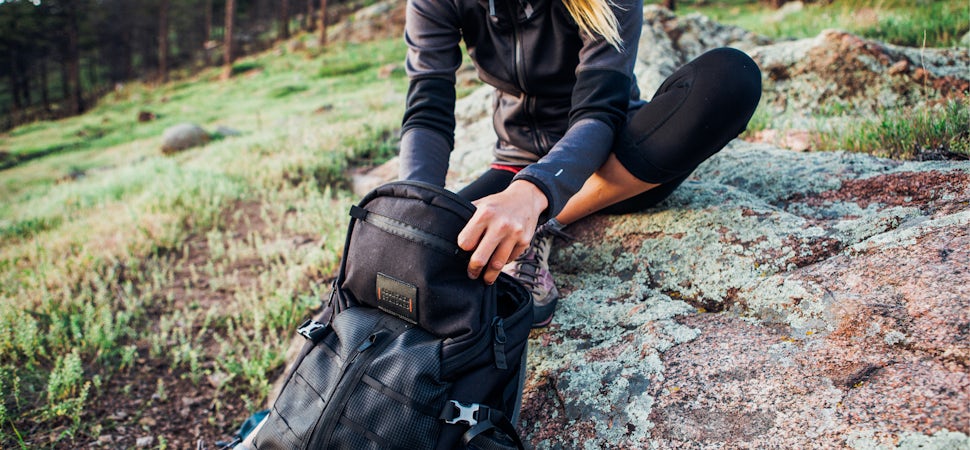Mountain Standard seeks to challenge the pricing model of outdoor apparel
Preaching radical price transparency in an industry still heavily focused on retail.

Warby Parker did it with glasses, Casper did it with mattresses, Parachute with bedding, Everlane with fashion, and now Mountain Standard is doing it with outdoor apparel.
In a dramatic shift of their business model, Boulder-based Mountain Standard has decided to do away with sales, retail markups, and pro-deals and instead focus on selling the best quality gear at a reasonable price. Their vision?
Premium goods at an honest price = more money for your adventures
Let's break this down.
Here's how retail markups work.
You probably own a nice Patagonia puffy jacket. You probably bought it from REI or Backcountry, and it cost you something in the $200 range. Here's how they reached that price. The jacket likely cost ~$40 to be manufactured. Patagonia paid ~$50 to the manufacturer. They sell the jacket to retailers for ~$100. This is the "true" price of the jacket. It's close to the price you'll see at big clearance sales, you know, during those off-season times when you're not actually in the market for a new puffy. BUT, when you actually need one, REI is selling it for ~$200.
By eliminating the retail side of the business and going direct-to-consumer, companies like Mountain Standard hope to offer more reasonable prices to consumers, while still hitting their bottom line. They're dedicating themselves to a typical "clearance" price ($100, in this example), every day of the year. This means no sales, and no pro-deals. Just one price, all the time.
This model has seen success in other industries. Eyeglass retailer Warby Parker is valued at over a billion dollars. Casper saw gross inefficiencies and waste in the mattress market, and did $30 million in sales their FIRST YEAR. With big box outdoor retailers like Sport Chalet and Sports Authority falling by the wayside and an increasing percentage of sales being conducted purely online, MS founder Jason Olden feels there is a market opportunity here.
Will it work?
This is yet to be seen. It's certainly a radical gamble on the part of the lean team. They have the industry knowledge and talent to pull it off. Mountain Standard spun out of SIDFACTOR, a product firm that has worked with some of the biggest names in outdoor apparel, including Black Diamond, Eddie Bauer, Burton, Marmot, and more.
A significant factor to overcome will be convincing consumers that the cheaper price ≠ lower quality product. Consumers conditioned to higher price points may assume that cheaper products must be inferior somehow. However, as industry insiders, the team is exploiting some interesting strategies to deliver high quality products that are built in the same factories, with the same materials, as apparel from popular brands that costs twice as much.
Their most recent product launch was the 28 and 38L Mountain Utility packs. The 28L sells for $99 and the 38L for just $139, whereas a similarly featured product from popular Topo Designs retails at nearly $200 (26L).
I had the chance to test out the 28L pack for a few weeks, and it quickly became my go-to pack for day-to day use, as a carryon bag while traveling, and on the trail while I was shooting in the Smoky Mountains. It's clear that the designers put a lot of thought into every aspect of the pack, from the magnetic chest strap, to convenient laptop and accessory inserts. It's completely replaced my previous workhorse, the Osprey Flapjack pack.
Is this part of a larger trend in the industry?
At the end of the day, it'll be up to consumers to decide. Will they take a gamble on a scrappy, up and coming brand with a message of quality and radical transparency? Or will they continue to fall back on tried and true (and more expensive) regulars, like The North Face? Time will tell, but recent trends point toward smaller, more audience-based companies like Topo Designs, Poler and Alite having success against the incumbents, especially with millennials. Amazon and Backcountry continue to take a larger portion of outdoor sales every year. We'll see what happens, but there's no doubt the outdoor apparel industry is in flux.
To learn more, visit MountainStandard.com, and read more about their vision here.
We want to acknowledge and thank the past, present, and future generations of all Native Nations and Indigenous Peoples whose ancestral lands we travel, explore, and play on. Always practice Leave No Trace ethics on your adventures and follow local regulations. Please explore responsibly!
Do you love the outdoors?
Yep, us too. That's why we send you the best local adventures, stories, and expert advice, right to your inbox.









